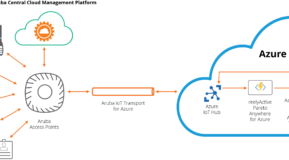
One of the biggest talking points in networking over the last few years is IoT. The Internet of Things has broadened to include more than just a Wi-Fi-enabled plug that you can control with your smartphone. Building automation, such as lighting and HVAC, thermal sensors, and life safety equipment, have joined the ranks of devices that need network connectivity. Long past are the days of providing access to only wired desktops, wireless laptops, and tablets. Networks need to be built to support a full-scale range of devices, many of which can be severely lacking in performance and security.
IoT Devices and Bandwidth
I was recently part of a podcast interview where several other network professionals and I discussed whether IoT devices need the benefits introduced with Wi-Fi 6E. For those not familiar with Wi-Fi 6E, check out this blog post by Dave Chen of Aruba. There was a common understanding amongst the interviewees that IoT was here to stay and networks need to be able to provide reliable, secure access. I believe we all agreed that most, if not all, IoT devices don't need the benefits introduced by Wi-Fi 6E, largely due to the minimal amounts of bandwidth needed for most IoT devices to operate. Generally, 2.4 GHz meets the needs of these low bandwidth-consuming devices, as well as provides adequate coverage in buildings where they reside.
One interesting idea that came up was whether IoT devices should be classified based on requirements and performance needs. Much like how Power over Ethernet (PoE) is classified, maybe IoT devices should be classified based on how much bandwidth is needed or the security requirements that need to be met.
A common knock against IoT is that generally they have poor quality radios, poor device design, and/or poor software. This doesn’t go for all devices, but most network professionals will be able to share stories of high-end equipment that is connected to their networks with less-than-adequate network components.
Is it possible that certain IoT devices could be delegated to only use 2.4 GHz (or lower frequencies) for their low bandwidth, less critical connections? Could devices, such as medical telemetry devices, that may need higher bandwidth capacity be classified to use 6 GHz where throughput has the potential to be greater? I think this would be beneficial and be a step forward in providing secure access that meets the requirements of these devices.
Networking Field Day Experience at Aruba Atmosphere Digital
Recently at Networking Field Day Experience at Aruba #ATM Digital, Aruba spoke about how they have created a unified infrastructure they call the Aruba Edge Services Platform. Aruba ESP is a tiered platform that combines infrastructure, policy, and AIOps that can provide a great experience for all devices, including IoT.
Aruba Central is the single pane-of-glass console that interfaces with Aruba ESP and is where policies can be crafted, device configurations can be automated, and artificial intelligence leveraged to provide a user experience that exceeds expectations and learns and grows while scaling with the needs of the enterprise.
AIOps was designed to automatically detect issues and resolve them before an user even knows what has happened. This type of flexibility allows a network to provide reliable access to all types of devices, including IoT, spanning from medical telemetry devices and life safety systems, down to that lightbulb in the hallway.
Overcoming Challenges
Allowing IoT devices on your network can be a challenge. At my house, I created a separate wireless network just to corral IoT devices with their low data rates and poorly written software. No trimmed off legacy data rates (mostly because my thermostat hates that efficiency) and a nice, comfy, mostly unoccupied 2.4 GHz channel exists to appease IoT devices. The rest of the wireless devices, such as laptops, tablets, and phones all get their faster, mostly unoccupied slice of 5 GHz. Many IoT devices don’t even support 5 GHz networks.
Leveraging tools, such as the Aruba Edge Services Platform, will ensure a high performing, scalable, and easy to maintain network. It is as critical as ever to be able to utilize all the tools in your toolbelt as the edge of your network continues to expand. It goes without saying, that it is important to have a network that is flexible, fast, and reliable, providing access to all types of devices, in a secure manner.
Go Deeper
Network Field Day Experience at Aruba Atmosphere Digital
Unlock the Power of Intelligent Edge with Aruba ESP
IoT Future Cloudy? Create a Blueprint for an IoT-Ready Network




